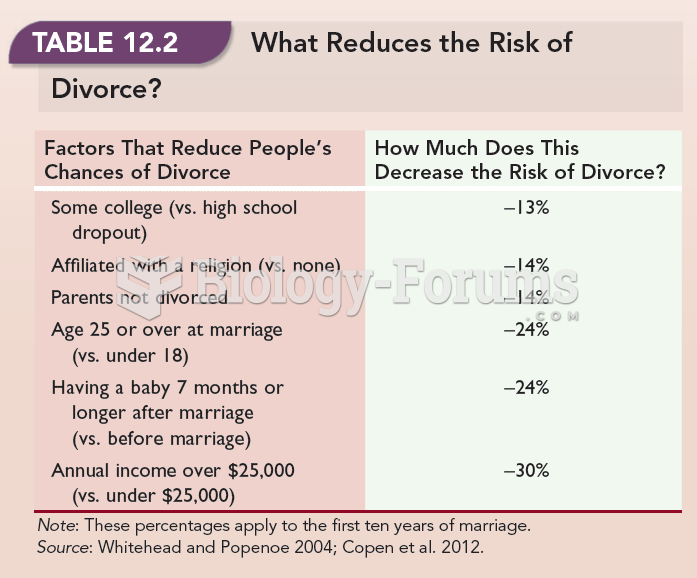Answer to Question 1
T
Answer to Question 2
The three different phobic disorders are specific phobia, social anxiety disorder, and agoraphobia. Specific phobia is the unrealistic and excessive fear of a specific animal, object, or situation. Common examples include fear of needles, flying, elevators, bugs, dentists, and snakes. An individual with a specific phobia experiences anticipatory anxiety when aware of an impending situation that may force a confrontation with the feared object. When the individual is actually exposed to the feared object, there is almost always an intense and immediate anxiety response. Social anxiety disorder is persistent fear of being in a social situation in which one is exposed to scrutiny by others and a related fear of acting in a way that will be humiliating or embarrassing or where social disapproval may occur. Examples of social phobias include irrational reactions to eating in public places, using public restrooms, public speaking, or attending social gatherings. Like the specific phobic, the social anxiety disorder is characterized by marked anxiety when anticipating the phobic situation and thus usually avoids such situations that interfere with his or her daily functioning. Agoraphobia is a marked fear of being alone or of being in public places where escape is difficult or where help is not readily available in the event of a panic attack. Often individuals with agoraphobia experience intense fear in shopping malls, in crowds, or in tunnels, bridges, or public vehicles. The primary characteristic of agoraphobia is severe phobic anxiety and phobic avoidance of the feared situation. Many agoraphobic individuals are housebound as a result of their avoidance and only venture forth when accompanied by a close and trusted companion.
Behavioral theories may be used to explain the acquisition and maintenance of phobic behaviors. Specifically, classical conditioning may explain the acquisition of phobias through association. Observational learning theory also may explain the development of phobic behavior through exposure to the fear responses exhibited by others. According to the negative information perspective, fears are acquired from sources such as the media that present negative information about objects, situations, or groups, suggesting that they should be feared. The cognitive-behavioral perspective attributes fears to cognitive distortions and catastrophic thinking.






